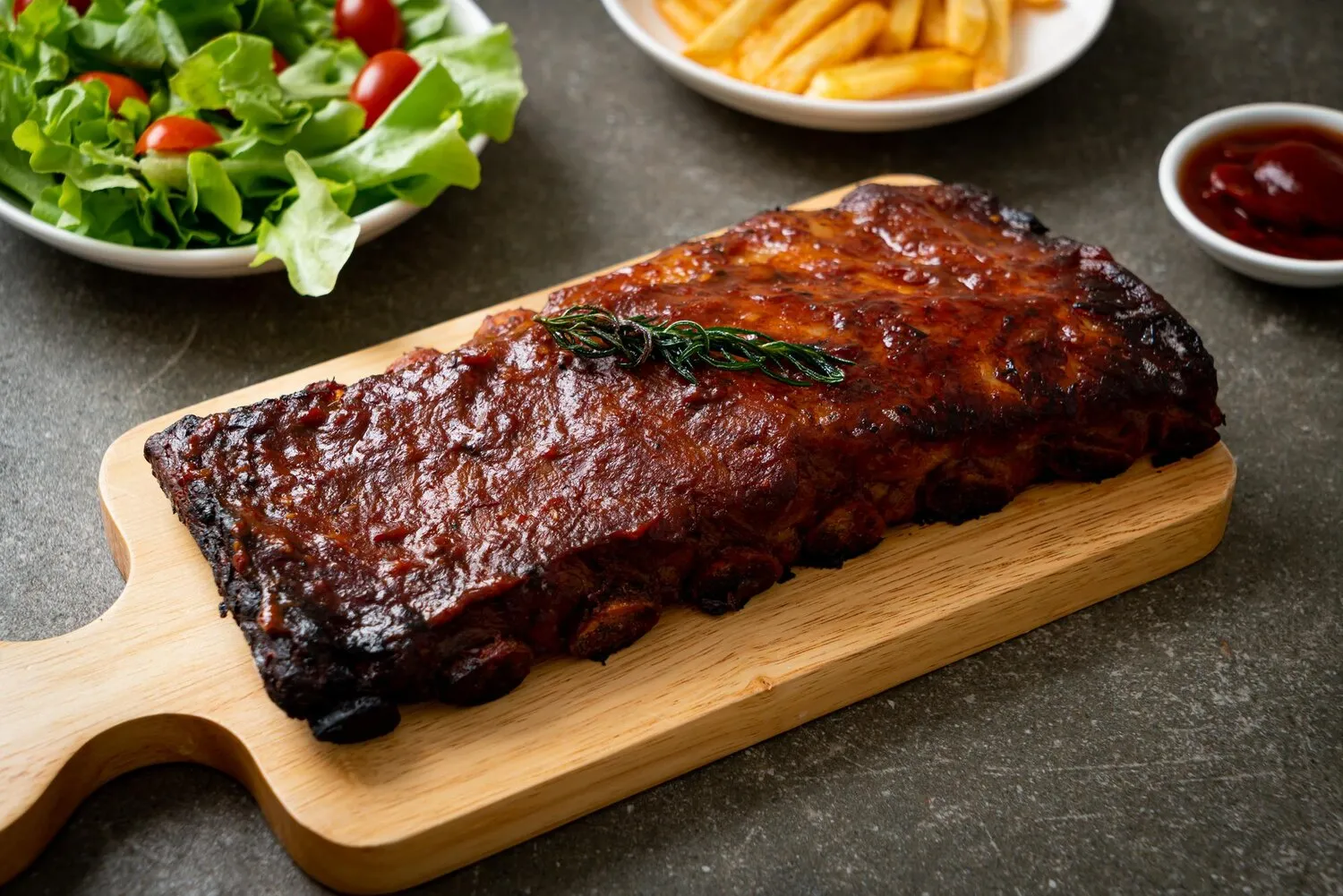
Pulled Pork
Customers mentioned the pulled pork with positive reviews.
Nutrition Facts
* The % Daily Value (DV) tells you how much a nutrient in a serving of food contributes to a daily diet. 2,000 calories a day is used for general nutrition advice.
Pulled pork traces its roots to the Southern United States, where pork has long been a staple. The slow-cooking techniques used were likely influenced by Native American methods of pit roasting and European culinary traditions, particularly the use of wood smoke for preservation and flavor. Barbecue, including pulled pork, became a central part of Southern social gatherings and celebrations.
Pulled pork is deeply embedded in Southern American culture, particularly barbecue culture. It's more than just food; it's a symbol of community, celebration, and regional identity. It's frequently served at gatherings, festivals, and family events.
Barbecue Competitions
Pulled pork is a staple in barbecue competitions across the United States, especially in the South. Pitmasters dedicate years to perfecting their recipes and techniques, and pulled pork is often a key element in their entries.
Community Gatherings
Pulled pork is a common dish at picnics, family reunions, and other community events. Its versatility and ease of preparation make it a popular choice for feeding large groups.
Regional Variations
Different regions within the South have their own variations of pulled pork, including different types of sauces and spice rubs. North Carolina is known for its vinegar-based sauce, while South Carolina favors mustard-based sauces. Memphis is known for dry-rubbed ribs and pulled pork, often served 'naked' without sauce.
Pulled pork is characterized by its smoky, savory, and often slightly sweet or tangy flavors. The slow cooking process renders the pork incredibly tender, resulting in a melt-in-your-mouth texture.
The primary flavor profile stems from the pork itself, usually a Boston butt or pork shoulder, which is rich in fat and connective tissue that breaks down during the long cooking process. Smoke from wood like hickory, oak, or fruit woods contributes a deep, smoky flavor. A dry rub consisting of spices such as paprika, brown sugar, garlic powder, onion powder, chili powder, cumin, and black pepper is often applied to the pork before cooking. The sauce, typically vinegar-based, tomato-based, or mustard-based, adds another layer of complexity, providing sweetness, tanginess, or heat. The flavors meld together over time, creating a complex and satisfying taste.
Low and Slow Cooking
Cook the pork at a low temperature (around 225-275°F) for a long period of time (6-12 hours) to allow the connective tissue to break down and the meat to become incredibly tender. Internal temperature should reach around 203-205°F.
Wood Selection
Experiment with different types of wood to find the flavor profile you prefer. Hickory is a classic choice for a strong, smoky flavor, while fruit woods like apple or cherry offer a sweeter, more subtle smoke.
Resting the Pork
After cooking, wrap the pork tightly in foil and let it rest for at least an hour (or even longer in a faux cambro or cooler) before pulling. This allows the juices to redistribute, resulting in a more moist and flavorful product.
Pulling Technique
Use two forks or meat claws to shred the pork. Remove any large pieces of fat or bone during the pulling process. Mix the pulled pork with the accumulated juices for added flavor and moisture.
Explore additional Barbeque dishes and restaurants
Explore BarbequeDiscover top dining spots and culinary experiences in Lubbock.
Explore LubbockLearn more about the food culture, restaurant scene, and culinary heritage of United States.
Explore United States